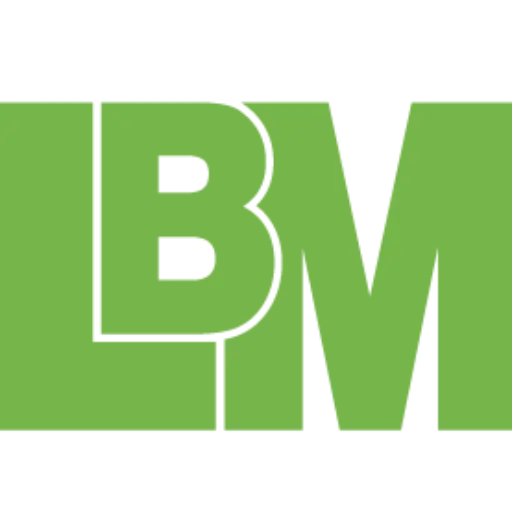- Mon - Fri: 8.30 AM - 5:00 PM
- 26565 Agoura Rd., 200, Calabasas, CA 91302
- 818-884-8075

What Is the Chapter 5 Debt Limit? Small Business Guide
What Is the Chapter 5 Debt Limit and Why It Matters in 2024
What is the Chapter 5 debt limit is a critical question for small business owners considering bankruptcy relief. If you’re working with a financially distressed client, Chapter 5—officially known as Subchapter V of Chapter 11—is a streamlined bankruptcy option designed specifically for small businesses. It offers faster, more affordable debt restructuring without the high costs and lengthy procedures of traditional Chapter 11. For lawyers and law firms focused on converting bankruptcy leads, understanding the Chapter 5 debt limit is essential. Not every client qualifies, so attorneys must quickly evaluate eligibility and guide them toward the most effective strategy.
What Is the Chapter 5 Debt Limit in 2024?
The Chapter 5 debt limit defines whether a business qualifies for Subchapter V bankruptcy. As of 2024, the current limit is $7.5 million in total debts—both secured and unsecured. This temporary increase, part of the CARES Act and later extensions, significantly expanded the number of small businesses eligible for Chapter 5 protections.
It’s important to note:
- The $7.5 million cap must be primarily business-related debt.
- At least 50% of the debt must arise from business activity.
- The debtor must be engaged in commercial or business activity at the time of filing.
This debt limit is not permanent and may change. Lawyers who rely on bankruptcy leads must stay updated on the latest thresholds to determine case viability.
If a business exceeds the Chapter 5 debt limit, they may have to file under standard Chapter 11 or consider alternatives, which often come with greater costs and complexity.
Why the Chapter 5 Debt Limit Matters to Lawyers
For attorneys working with bankruptcy clients, knowing the Chapter 5 debt limit is a key part of intake and qualification. Many small business owners searching for bankruptcy options are looking for the fastest, most affordable route—and Chapter 5 often delivers.
Lawyers evaluating legal leads should ask:
- How much total debt does the business have?
- Is the majority of that debt business-related?
- Is the owner still operating the business?
These questions help filter out unqualified leads early and allow firms to focus on bankruptcy leads that are more likely to convert into clients.
Is Chapter 5 Bankruptcy Worth It for Small Businesses?
Chapter 5 bankruptcy offers clear benefits to business owners facing unmanageable debt. Compared to traditional Chapter 11, Subchapter V is:
- Faster: No creditors’ committee, fewer reporting requirements
- Cheaper: Streamlined procedures reduce legal and administrative costs
- Debtor-friendly: Owners can retain equity and stay in control of operations
For small business clients under the debt limit, Chapter 5 is often the best option. And for lawyers asking how to find bankruptcy clients, this debt threshold becomes a strategic filter. By focusing on high-intent leads who meet the Chapter 5 criteria, firms can increase efficiency and results.
How Bankruptcy Lawyers Use Leads to Find Qualified Chapter 5 Clients
To grow consistently, law firms must connect with the right clients at the right time. This is where quality bankruptcy leads matter most.
Clients searching “What is the Chapter 5 debt limit?” are usually close to taking legal action. They need fast answers and clear guidance. Law firms using intake systems and lead providers like Legal Brand Marketing can:
- Identify business owners under the debt cap
- Qualify leads based on business activity and debt type
- Schedule consultations quickly to improve conversions
With the right screening in place, legal leads for Chapter 5 can become highly profitable and help build long-term client pipelines.
What Is the Chapter 5 Debt Limit? Know Before You File
So, what is the Chapter 5 debt limit? As of 2024, the threshold is $7.5 million in business-related debt. This expanded cap makes Subchapter V bankruptcy accessible to more small businesses than ever before. Whether a client has $500,000 or $7 million in debt, Chapter 5 can provide streamlined relief—if they qualify. Attorneys who understand the debt limit and apply it during intake can better guide clients, reduce complexity, and improve case outcomes.
Get Qualified Chapter 5 Bankruptcy Leads for Small Businesses
Are potential clients asking, “What is the Chapter 5 debt limit?” Legal Brand Marketing connects your law firm with exclusive, location-based bankruptcy leads who are actively searching for small business debt relief. Our leads are pre-screened, intent-driven, and aligned with Subchapter V qualification criteria—helping you convert more consultations into paying clients. Start building your Chapter 5 bankruptcy caseload today—partner with Legal Brand Marketing.
Frequently Asked Questions (FAQs)
1. What’s the difference between Chapter 5 and Chapter 11?
Chapter 5 (Subchapter V) is a simplified version of Chapter 11 for small businesses. It’s faster, cheaper, and more debtor-friendly.
2. Who qualifies for Subchapter V bankruptcy?
Businesses with no more than $7.5 million in debt, where at least 50% of the debt is from business activity, may qualify.
3. Can individuals file under Chapter 5?
Only business owners or entities engaged in commercial activity can file. Certain individuals running sole proprietorships may qualify.
4. What happens if a business exceeds the Chapter 5 debt limit?
They may have to file under standard Chapter 11, which involves more complex requirements and higher costs.
5. Does Chapter 5 bankruptcy protect business assets?
Yes, it offers legal protections, including the automatic stay, and may allow owners to keep their business operational.
Key Takeaways
- Chapter 5 is designed for small businesses with under $7.5 million in debt
- Knowing the debt limit is key to filing under Subchapter V
- Lawyers must screen bankruptcy leads based on debt type and business activity
- Subchapter V offers fast, affordable restructuring options
- Law firms can grow faster by targeting pre-qualified legal leads for Chapter 5
- Legal Brand Marketing helps firms find and convert the right clients—at the right time




